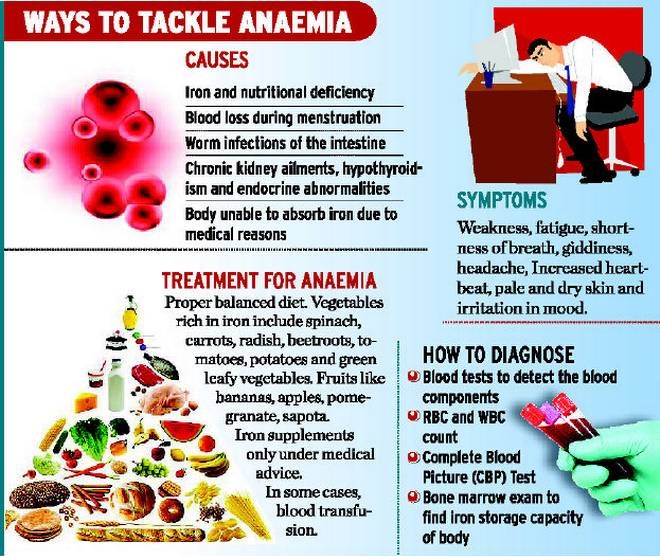PM2.5 and Anaemia | 27 Jan 2021
Why in News
A recent study by IIT delhi has tried to establish the association between ambient PM 2.5 exposure and occurrence of anaemia among children under the age of 5 years of age in India.
- PM2.5 refers to particles that have diameter less than 2.5 micrometres (more than 100 times thinner than a human hair) and remain suspended for longer.
- These particles are formed as a result of burning fuel and chemical reactions that take place in the atmosphere. Natural processes such as forest fires also contribute to PM2.5 in the air. These particles are also the primary reason for occurrence of smog.
Key Points
- Findings
- Extended periods of exposure to PM 2.5 can lead to anaemia among children under the age of 5 years. About 63% of the included children were found to be anaemic.
- Children at Risk:
- Young Children: Children with lower age had higher vulnerability of being anaemic.
- Poverty: Children from lower wealth index levels had higher percentages of anaemia.
- Maternal Anaemia: Children born to anaemic women have higher chances of developing anaemia.
- Intensity:
- Higher PM2.5 levels exposure, decreases the average haemoglobin levels in children.
- Significance:
- The study is important because so far anaemia has been looked at through the prism of nutrition deficiency, specifically that of iron.
- Exposure to air pollution, especially PM 2.5, has been shown to induce systemic inflammation.
- Inflammation refers to the body's process of fighting against things that harm it, such as infections, injuries, and toxins, in an attempt to heal itself.
- Over time, chronic inflammation may have a negative impact on tissues and organs.
- Current Scenario: According to the India National Family and Health Survey 2015–2016 (NFHS-4), 53.1%of women in India with 15–49 years of age and 58.5 % of children under five were anaemic.
- A ‘Lancet Global Health report’ also revealed that 23% of Indian men suffer from anaemia.
Anaemia
- The World Health Organization (WHO) defines anaemia as a condition in which the number of red blood cells or their oxygen-carrying capacity is insufficient to meet physiological needs.
- Causes: Iron deficiency is the most common cause of anaemia, although other conditions, such as folate, vitamin B12 and vitamin A deficiencies, chronic inflammation, parasitic infections, and inherited disorders can all cause anaemia.
- Symptoms: In its severe form, it is associated with fatigue, weakness, dizziness and drowsiness. Pregnant women and children are particularly vulnerable.
- Government Programmes Related to Anaemia:
- In 2018, the government of India launched Anaemia Mukt Bharat (AMB) as part of the Intensified National Iron Plus Initiative (NIPI) Program for accelerating the annual rate of decline of anaemia from one to three percentage points.
- The target groups for AMB are Children (6-59 months, 5-9 years), Adolescent Girls & Boys (10-19 years), Women of Reproductive Age (15-49 years), Pregnant Women and Lactating Mothers.
- The Ministry of Health and Family Welfare has also launched the Weekly Iron and Folic Acid Supplementation (WIFS) Programme to meet the challenge of high prevalence and incidence of anaemia amongst adolescent girls and boys.
- Other programmes include Integrated Child Development Scheme (ICDS), National Nutritional Anemia Control Program (NNACP), etc to combat anemia.
Way Forward
- Emphasis must be laid on to curb PM 2.5 levels, especially in urban areas. A holistic health strategy is required to effectively address the issue of anaemia. Also, there is a need to bridge the gap between policy and practice.
- The mother’s health needs to be addressed as anaemia in mothers and premature delivery can also lead to childhood anaemia.
- In addition to the maternal influence on childhood anaemia, paternal and overall household influences need to be considered for a more comprehensive policy framework for intervention at the household level.

